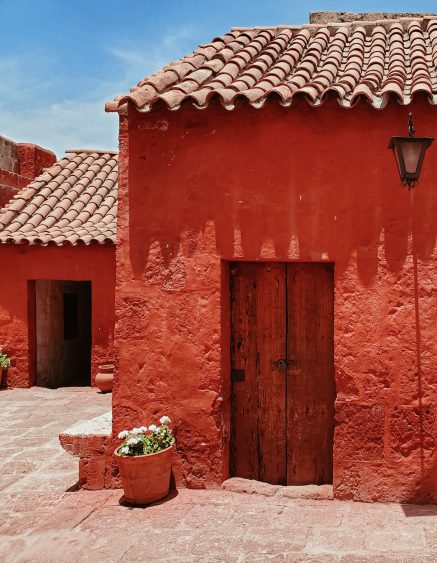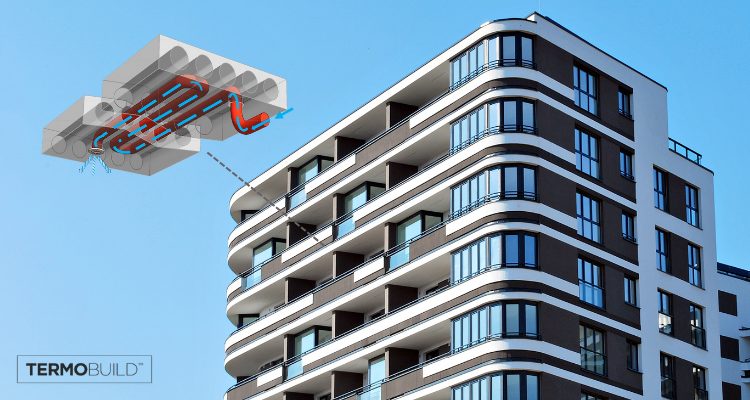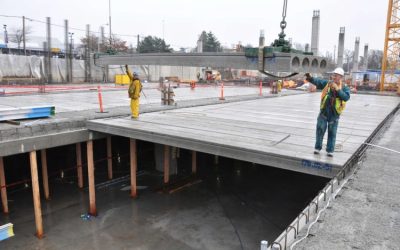Where Smart Grid Meets Age-Old Building Principles
Energy Efficient Construction with Innovative Hybrid Concrete and HVAC Smart Floor System
As we’ve improved human shelters from caves to condos, we have engineered increasingly complex systems to maintain our comfort. Modern central heating and cooling systems give us the freedom to live and work almost anywhere and be spared exposure to weather. This is, of course, a good thing. But humankind pays a price for so much comfort; it is highly energy intensive.
In fact, buildings account for 36 percent of total energy used in the US and 65 percent of electricity. Energy expenses are particularly high for hospitals, hotels and universities that run 24/7. Thus, architects and engineers worldwide are trying to find ways to design large structures in a more energy conscious way. Often this means embedding ever greater complexity into construction. And while this achieves energy savings, the added systems and technology drive up the price of any building, and especially green building.
Year round thermal storage is a solution that costs no more than conventional construction, yet offers superior energy management and comfort. But before we explain the solution, let’s look at where contemporary building often goes wrong. Today’s building industry relies heavily on technology, but neglects age-old practices used for centuries to naturally heat and cool inner spaces. These practices paid attention to air flow and used temperature-moderating materials
Energy Efficient Construction with Innovative Hybrid Concrete and HVAC Smart Floor System
Consider the Egyptian earthen homes or Pueblo adobe structures that incorporated mud brick for floors and walls. The concrete-like materials absorbed the cool air of evening and radiated it during the heat of day. Or conversely, at night they held the warmth of day inside when the air outdoors grew cold.

By integrating this pragmatism with today’s smart technology, we can significantly reduce the cost of high performance construction. We call this solution Termobuild, an innovation that costs no more than conventional building, but provides superior comfort, healthier indoor air, and energy savings.
Revolutionizing the way we design our buildings. Why does it work?

A ‘smart floor’ is the key design element. The concrete floor easily absorbs and radiates heat and coolness. The concrete floor slab has a hollow core for air flow. Couple this smart floor with sensors, energy harvesting, air ventilation keyed to outdoor temperatures, and air-driven radiant heating and cooling, and you have the beginning of the Termobuild system.
In a 24-hour period, these buildings undergo a kind of ‘supercharging’ with predominately free low-grade energy (the aggregation of the heat from lights, computers and bodies, which is absorbed by smart floors), which provides increased comfort and energy efficiency.
As a result – and this is important – they require 40 to 50 percent less mechanical heating and cooling equipment than does a conventional building. Termobuild is able to do more with less, which results in a significant price advantage over alternatives.
Equally important, these remarkable buildings act as a form of advanced distributed energy. As such, a Termobuild structure provides a way to achieve some of the most sought after and elusive goals in green building:
- Exceptional energy efficiency
- Thermal energy storage and built-in standby
heating and cooling - Storm resiliency and energy security
- Energy management that takes full advantage
of dynamic pricing and demand response
Termobuild’s proven approach has been used over the last decade in the construction of new schools, universities, medical facilities, offices and other buildings. Today, interest is heightening in Termobuild as the world increasingly seeks cost-competitive energy-efficient construction.
The Building is Local, the Solution is Global

Termobuild’s Integrated Thermal Storage Ventilation is conducive to a wide-range of climates worldwide, even some of the most severe. For example, Chennai, India has scorching heat on par with Arizona, and is notorious for high power prices and blackouts because of grid limitations. But the Husky Corp. building in Chennai, with its Termobuild design, is spared from the grid’s unpredictability and punishing pricing structure.
Stored energy in smart floors allows the building to stay cool even when power supply is restricted. Moreover, when the eye of a cyclone came within 14 miles of the building, those inside experienced no disruption in comfort, demonstrating the exceptional storm resiliency of Termobuild structures.

MEET THE AUTHOR




